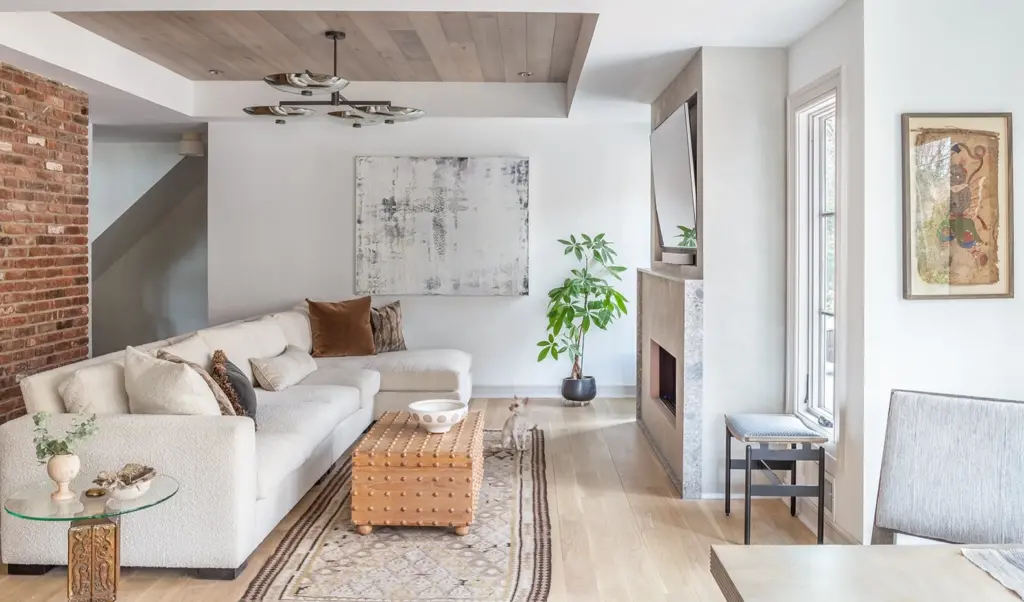When renovating your home, ceilings often get overlooked, but they play a crucial role in the overall aesthetic and functionality of a space. Here are some key considerations:
Used with permission from Mimi & Hill
1. Ceiling Height
Impact on Space Perception: Higher ceilings can make rooms feel more spacious and luxurious, while lower ceilings can create a cozier, more intimate atmosphere.
Structural Changes: Altering ceiling height can be complex and costly, involving structural changes and potentially relocating plumbing, electrical, or HVAC systems.
Used with permission from Mimi & Hill
2. Ceiling Design and Style
Traditional Flat Ceilings: Simple and common, easy to maintain and paint. These are also far more desirable than popcorn ceilings. You’d be surprised at the low cost of removing popcorn ceilings.
Vaulted/Cathedral Ceilings: Create a sense of grandeur and openness but may increase heating and cooling costs.
Coffered Ceilings: Add depth and architectural interest, suitable for formal areas like dining rooms or living rooms.
Tray Ceilings: Offer a subtle decorative element and can make a room feel taller.
Beamed Ceilings: Provide a rustic or industrial look, often used in living rooms or kitchens.
3. Materials and Finishes
Drywall: Most common material, easy to install and paint.
Plaster: Traditional and durable but more labor-intensive to apply.
Wood Panels: Add warmth and texture, ideal for rustic or coastal styles.
Metal Tiles: Offer a unique, industrial look, often used in kitchens or bathrooms.
Acoustic Tiles: Useful for soundproofing, especially in media rooms or home offices.
4. Lighting
Recessed Lighting: Creates a clean look, good for general illumination.
Pendant Lights: Provide focused lighting, great for dining areas or kitchen islands.
Chandeliers: Add elegance and a focal point, suitable for entryways or dining rooms.
Cove Lighting: Enhances architectural features and adds ambient light.
Used with permission from Mimi & Hill
5. Insulation and Soundproofing
Thermal Insulation: Essential for energy efficiency, keeping your home warm in winter and cool in summer.
Acoustic Insulation: Important in multi-story homes or apartments to reduce noise transmission between floors.
6. Painting and Finishes
Color Choices: Light colors can make a room feel larger and more open, while dark colors can create a cozy, intimate atmosphere.
Textured Finishes: Options like popcorn, knockdown, or smooth finishes can add visual interest but may require more maintenance.
Used with permission from Mimi & Hill
7. Sustainability
Eco-Friendly Materials: Consider using sustainable materials like reclaimed wood or low-VOC (volatile organic compounds) paints.
Energy Efficiency: Integrating energy-efficient lighting and proper insulation can reduce your carbon footprint and utility bills.
8. Safety and Building Codes
Compliance: Ensure any changes meet local building codes and regulations, particularly if you’re making structural changes.
Fire Safety: Use fire-resistant materials and ensure proper installation of smoke detectors.
9. Budget
Cost Estimates: Factor in the costs of materials, labor, and any structural changes. A Renovated-Home is not an investment to take lightly.
Return on Investment: Consider the potential increase in home value and comfort versus the cost of renovations.
10. Professional Advice
Consultation: Hiring a professional architect or interior designer can help you make informed decisions and achieve the best results.
Careful consideration of these aspects can help you create a beautiful and functional ceiling design that enhances your home renovation project. Thanks to Renovated-Home for consulting.
The post Ceiling considerations when renovating your home appeared first on Decorology.



